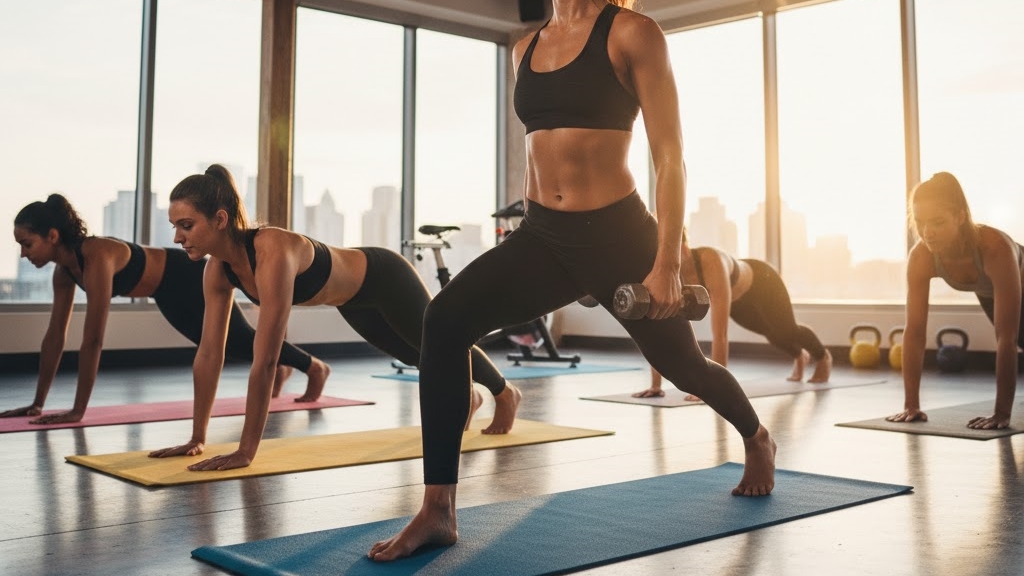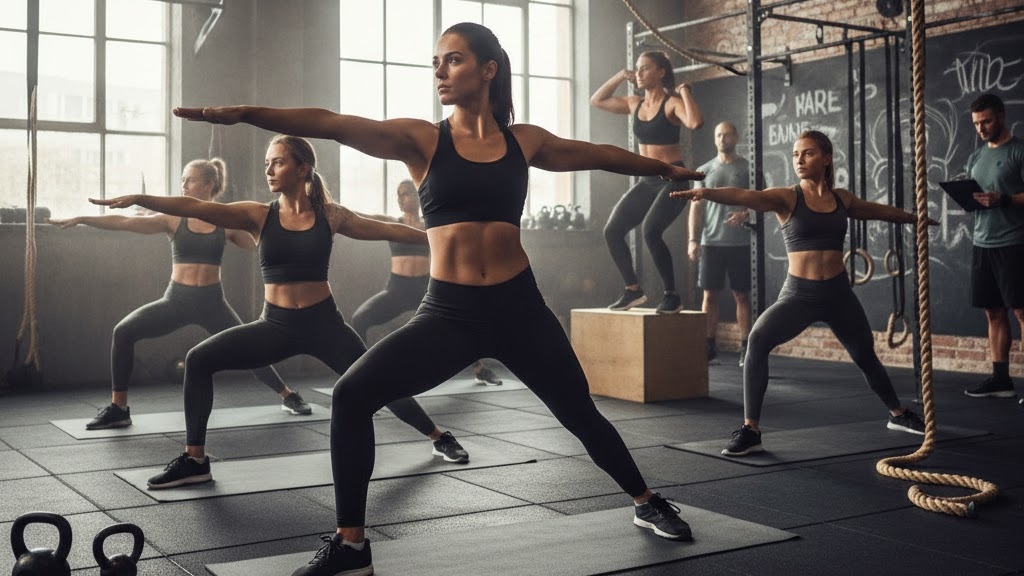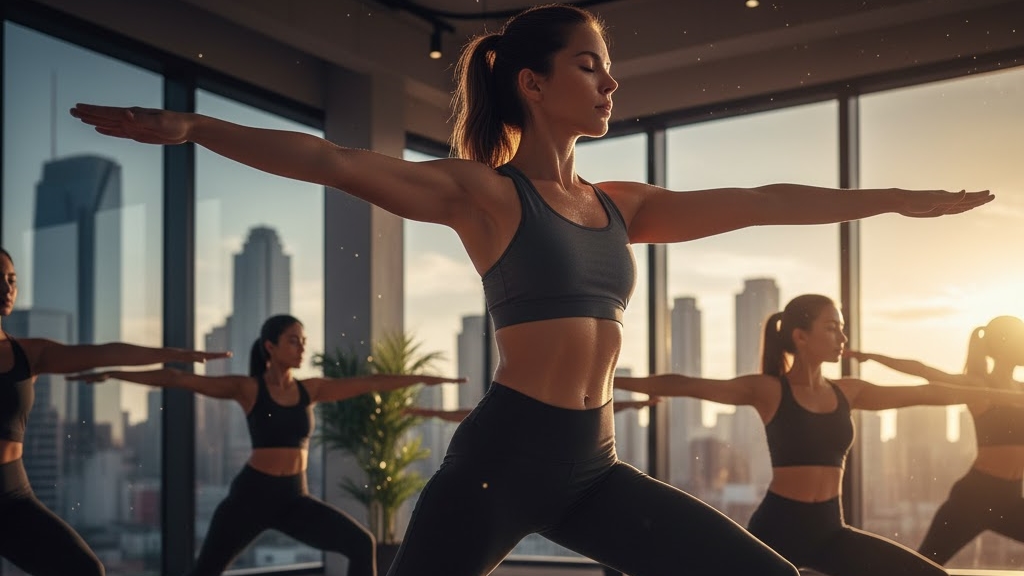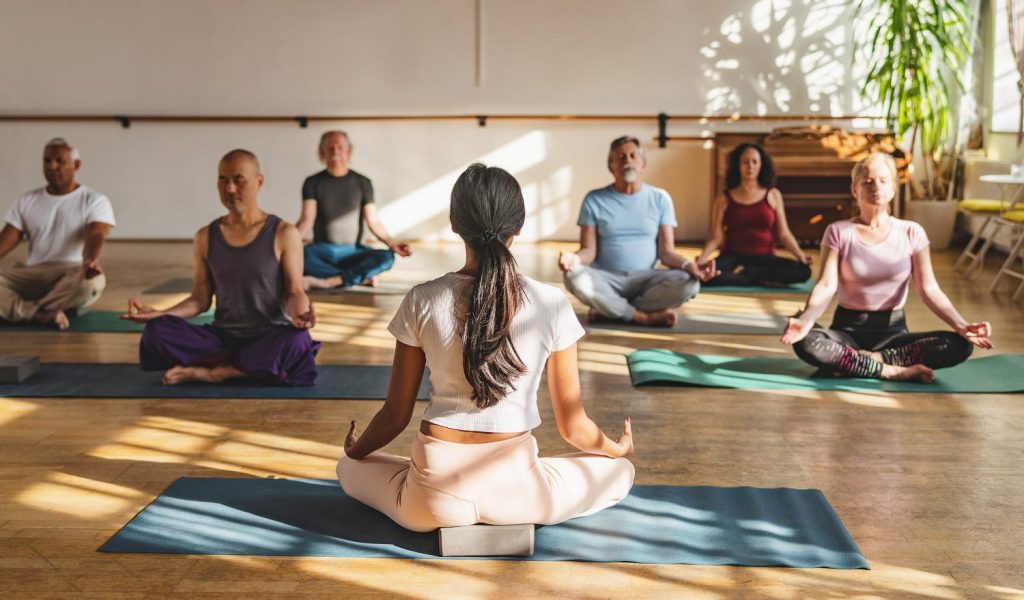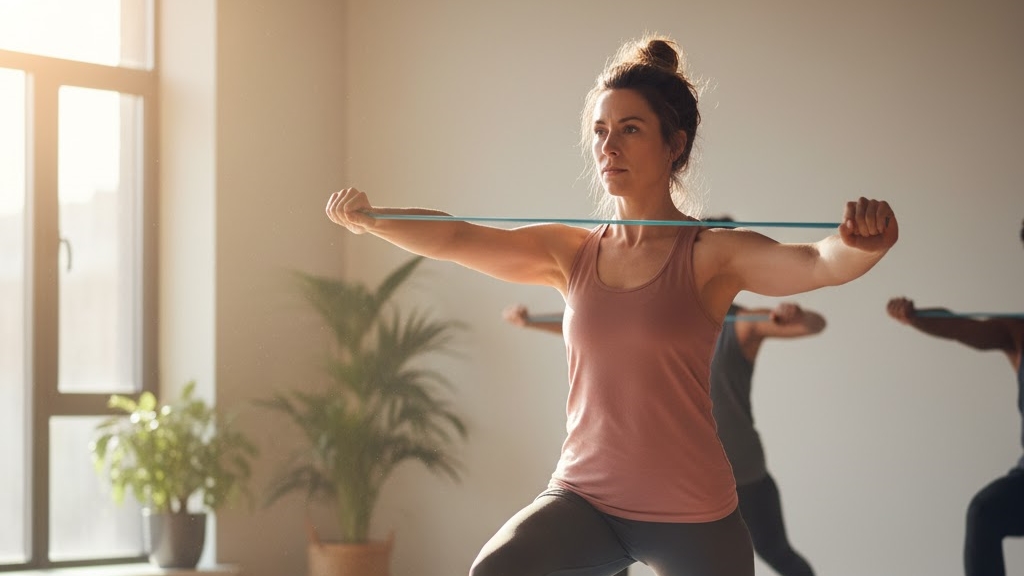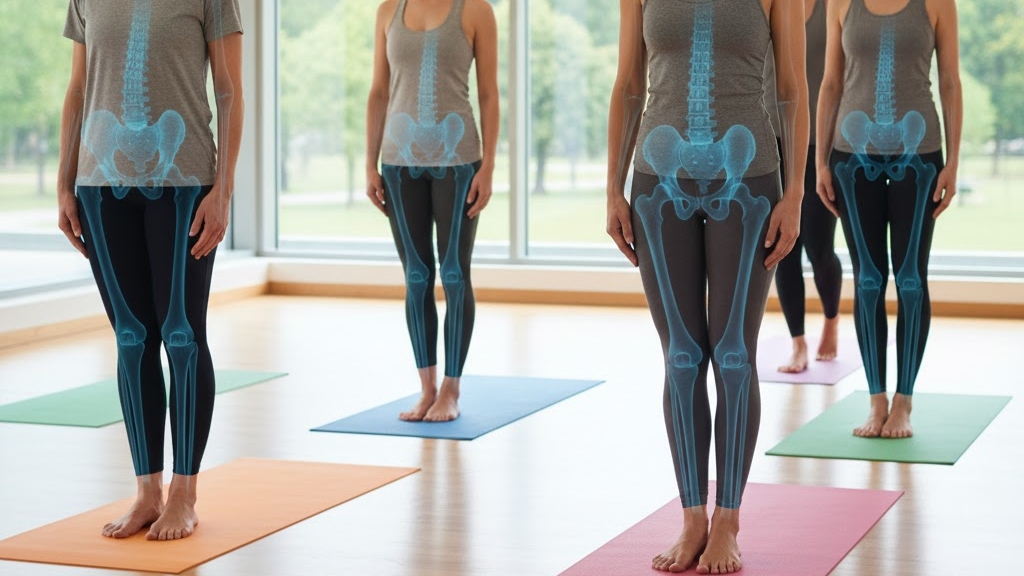
Have you ever caught yourself slouching at your desk or leaning to one side while standing? Poor posture is one of the most common yet overlooked causes of back pain, fatigue, and even low confidence. Luckily, there’s a natural and effective solution — posture correction yoga.
Yoga strengthens your muscles, realigns your body, and retrains your posture through awareness and balance. It’s not about forcing your body into stiff “perfect” alignment; it’s about teaching your muscles to support your spine naturally and gracefully.
In this guide, you’ll learn how yoga can improve posture and muscle alignment, which poses are best for back health, and how to integrate posture correction yoga into your daily life.
The Science of Posture and Alignment
Posture is more than just “standing straight.” It’s the way your muscles, bones, and joints support your body against gravity.
When posture is poor — think rounded shoulders, forward head, or tilted pelvis — it causes muscle imbalances and strain. Over time, this can lead to:
- Neck and shoulder pain
- Lower back tension
- Limited mobility
- Poor breathing patterns
Yoga for posture correction helps by:
- Activating underused muscles (like the core and back extensors)
- Releasing tight areas (like the chest and hip flexors)
- Improving proprioception — your body’s ability to sense its position in space
When you combine strength, flexibility, and mindfulness, your body naturally realigns — without pain or force.
Benefits of Posture Correction Yoga
Here’s what you can expect when you commit to yoga for better posture:
- Improved Spinal Alignment: Yoga strengthens the muscles that support the spine, reducing slouching and rounding.
- Reduced Back and Neck Pain: Regular stretching relieves tension caused by long hours of sitting or poor ergonomics.
- Enhanced Core Strength: A strong core supports upright posture and stabilizes the entire body.
- Better Breathing and Energy: Proper posture opens your chest and diaphragm, improving oxygen flow.
- Increased Confidence and Presence: Standing tall boosts self-esteem and communicates assurance.
- Balanced Muscle Engagement: Yoga restores symmetry, helping overactive and underactive muscles work together.
- Improved Mind-Body Awareness: Mindful movement retrains your brain to notice and correct slouching in daily life.
Key Yoga Poses for Posture Correction
Let’s explore the best posture correction yoga poses that you can start practicing today:
1. Mountain Pose (Tadasana)
Purpose: Foundation of good posture.
How to: Stand tall with feet hip-width apart, engage your thighs, lengthen the spine, and roll shoulders back.
Benefits: Builds awareness of body alignment and strengthens stabilizing muscles.
2. Cat-Cow Pose (Marjaryasana-Bitilasana)
Purpose: Improves spinal flexibility and releases tension.
How to: On all fours, alternate between rounding your spine (Cat) and arching it (Cow) with breath.
Benefits: Increases spinal mobility and improves back awareness.
3. Cobra Pose (Bhujangasana)
Purpose: Strengthens the back extensors and opens the chest.
How to: Lie on your stomach, place palms under shoulders, and gently lift your chest.
Benefits: Counters forward hunching and enhances spinal strength.
4. Bridge Pose (Setu Bandhasana)
Purpose: Strengthens glutes and lower back while opening chest and shoulders.
How to: Lie on your back, bend knees, and lift hips while engaging core muscles.
Benefits: Aligns the spine and reduces lower back compression.
5. Plank Pose (Phalakasana)
Purpose: Builds total-body strength and posture endurance.
How to: From a push-up position, keep your body in a straight line and engage your core.
Benefits: Develops shoulder and core stability for upright posture.
6. Child’s Pose (Balasana)
Purpose: Gently stretches the spine and relaxes muscles after long sitting periods.
How to: Kneel, sit back on heels, and stretch arms forward with forehead on the mat.
Benefits: Relieves lower back tension and restores spinal length.
7. Locust Pose (Salabhasana)
Purpose: Strengthens the back and glutes.
How to: Lie face down, lift chest, arms, and legs off the ground.
Benefits: Builds endurance in the posterior chain for posture support.
8. Seated Twist (Ardha Matsyendrasana)
Purpose: Increases spinal mobility and releases tension.
How to: Sit tall, cross one leg over the other, and twist toward the bent knee.
Benefits: Improves spinal rotation and relieves upper back stiffness.
Sample 30-Minute Posture Correction Yoga Routine
| Duration | Pose | Focus |
|---|---|---|
| 5 min | Mountain Pose & Standing Breaths | Awareness |
| 5 min | Cat-Cow + Child’s Pose | Mobility |
| 5 min | Cobra Pose + Locust Pose | Back Strength |
| 5 min | Bridge Pose + Plank | Core Activation |
| 5 min | Seated Twist + Forward Fold | Alignment |
| 5 min | Savasana | Relaxation and Integration |
Tip: Practice this routine 3–4 times per week for visible improvements in 2–3 weeks.
Real-Life Case Studies: Posture Correction Through Yoga
Case Study #1: Daniel, 42 – Office Worker
“After years at a desk job, I had constant neck pain and rounded shoulders. I started a 20-minute posture correction yoga routine each morning. Within 4 weeks, my pain was gone, and coworkers commented on how much taller and more confident I looked.”
Result: Improved upper back alignment and reduced pain.
Case Study #2: Melissa, 33 – Teacher
“Standing all day made my lower back ache. My yoga instructor taught me Bridge and Mountain poses for posture. Practicing daily not only fixed my posture but also gave me a noticeable energy boost during classes.”
Result: Reduced back pain and improved stamina.
Case Study #3: Aiden, 27 – Weightlifter
“My workouts were strong, but my posture wasn’t. My trainer added yoga once a week to balance strength and flexibility. I noticed my lifts improved, and shoulder pain disappeared.”
Result: Better shoulder alignment and functional strength.
Case Study #4: Hana, 56 – Retired Nurse
“Years of caregiving took a toll on my spine. Yoga taught me how to move gently and correct my posture. After three months, I can stand longer without pain and feel more balanced.”
Result: Enhanced mobility, reduced pain, and better posture awareness.
The Mind-Body Connection in Posture Correction
Posture isn’t just physical — it reflects how we feel mentally. Slouching can often mirror stress, fatigue, or lack of self-confidence.
Yoga teaches mindfulness, helping you become aware of how emotions influence body language.
Through posture correction yoga, you learn to:
- Breathe deeply, promoting calm and focus.
- Ground yourself, improving balance.
- Carry confidence, through open shoulders and an upright spine.
Good posture becomes not just a physical habit, but a mindset of strength and grace.
Tips for Improving Posture with Yoga
- Practice Consistently: Aim for 15–30 minutes daily.
- Use Props: Yoga blocks, straps, or a wall can support alignment.
- Engage Core Muscles: Strong abs protect the lower back and support your spine.
- Stretch Tight Areas: Focus on the chest, shoulders, and hips to restore symmetry.
- Monitor Your Posture Daily: Check your sitting, standing, and walking habits.
- Breathe Correctly: Deep breathing engages postural muscles naturally.
- Stay Mindful: Awareness is the key to maintaining proper alignment.
7-Day Posture Correction Yoga Plan
| Day | Focus | Duration |
|---|---|---|
| Monday | Spine Alignment (Cat-Cow, Cobra) | 25 min |
| Tuesday | Core Activation (Plank, Bridge) | 30 min |
| Wednesday | Shoulder Mobility | 20 min |
| Thursday | Restorative Yoga | 15 min |
| Friday | Balance & Awareness (Tadasana Flow) | 25 min |
| Saturday | Full-Body Alignment Routine | 30 min |
| Sunday | Gentle Stretch + Breathwork | 20 min |
Common Posture Mistakes Yoga Can Fix
| Mistake | Cause | Yoga Solution |
|---|---|---|
| Forward Head Posture | Tech neck, slouching | Cobra, Locust, Bridge |
| Rounded Shoulders | Weak upper back | Mountain, Reverse Tabletop |
| Anterior Pelvic Tilt | Tight hip flexors | Low Lunge, Plank |
| Collapsed Core | Weak abs | Boat Pose, Plank |
| Uneven Weight Bearing | Leg dominance | Tree Pose, Warrior II |
Conclusion: Align Your Body, Empower Your Life
Practicing posture correction yoga does more than improve how you look — it changes how you feel. With every mindful movement, you retrain your body to stand taller, breathe better, and move freely.
When your posture aligns, your confidence, energy, and vitality rise with it.
Start today: Take five minutes to roll your shoulders back, breathe deeply, and stand tall. Your spine — and your future self — will thank you.
FAQs About Posture Correction Yoga
Can yoga really fix poor posture?
Yes! Yoga strengthens and lengthens muscles responsible for alignment, gradually improving posture.
How long before I see results from posture correction yoga?
You can start noticing small improvements in 2–4 weeks with consistent practice.
Which yoga style is best for posture correction?
Hatha, Iyengar, and restorative yoga focus on alignment and awareness, making them great for posture work.
Can yoga help with scoliosis or spinal curvature?
Gentle yoga can support muscle balance and relieve pain, but consult a medical professional for guidance.
Do I need props for posture correction yoga?
Props like blocks, straps, and walls help ensure safe alignment, especially for beginners.
Can yoga replace chiropractic adjustments?
Yoga complements chiropractic care by strengthening muscles that maintain alignment but doesn’t replace it.
Is it safe to do posture correction yoga daily?
Absolutely. Gentle daily practice promotes lasting improvement and awareness.
What time of day is best for posture correction yoga?
Morning sessions energize your spine for the day, while evening sessions relieve tension from sitting.
